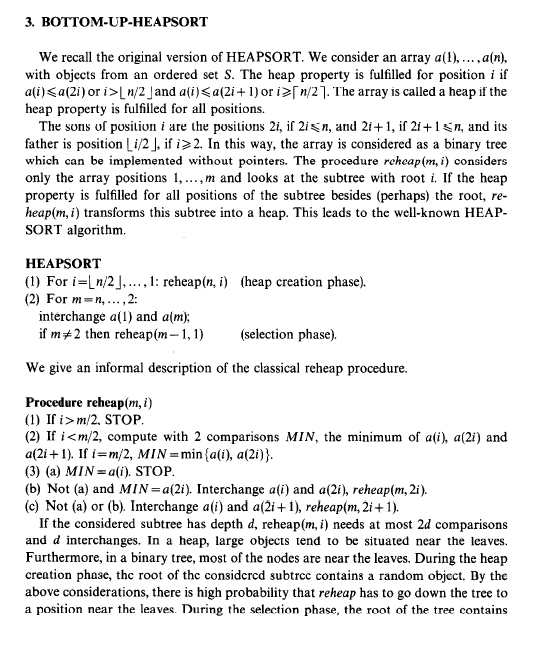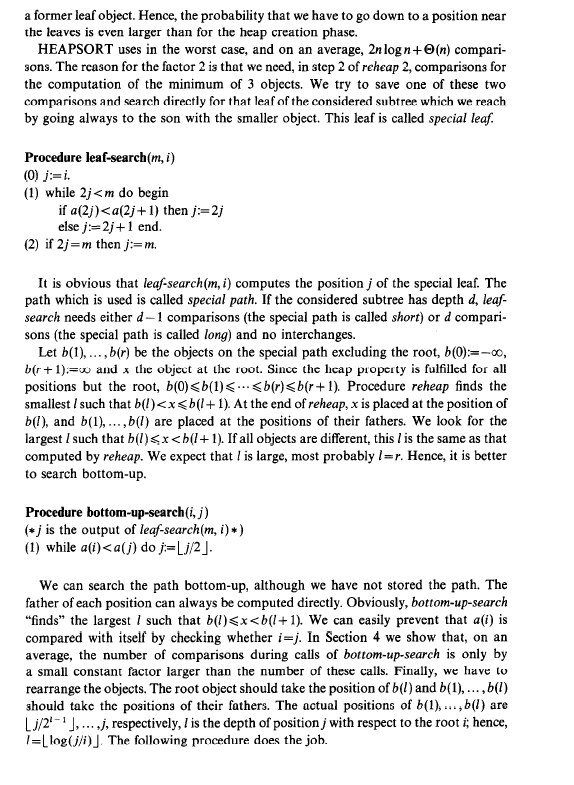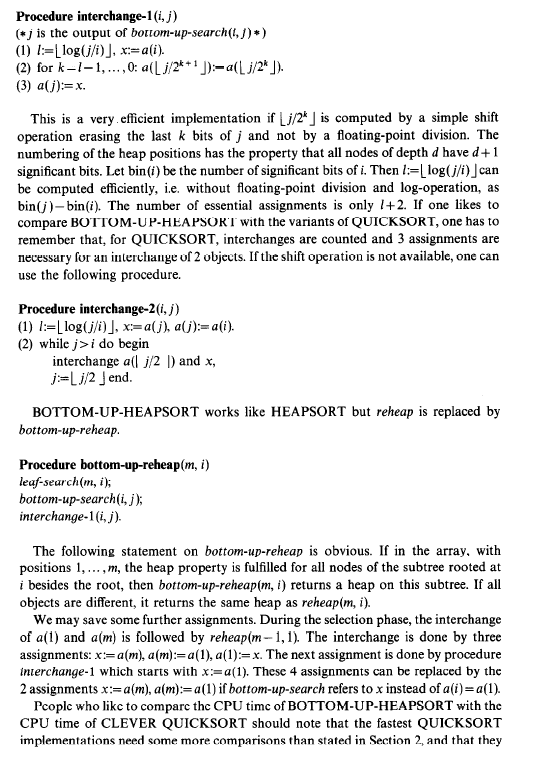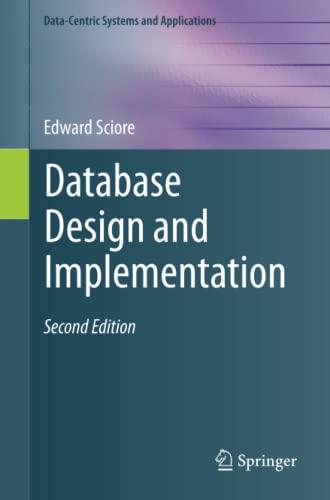Question
How to implement code in java, the bottom-up heapsort must contain all these instructions in the picture, do not use scanner and do not use
How to implement code in java, the bottom-up heapsort must contain all these instructions in the picture, do not use scanner and do not use extending comparable. In general, I MUST use these methods:
Bottom_up_reheap(int m, int i) // this would use these 3 methods below based on the picture given
bottom-up leaf_search(int m, int i)
bottom_up_search(int i, int j)
interchange(int i, int j)
void sort(int[] array) // use the bottom_up_reheap to sort the values by using recursion It does NOT recursively checked in a top-down manner. Everything must be done in a bottom-up manner. Please READ these instructions to do it.




Step by Step Solution
There are 3 Steps involved in it
Step: 1

Get Instant Access to Expert-Tailored Solutions
See step-by-step solutions with expert insights and AI powered tools for academic success
Step: 2

Step: 3

Ace Your Homework with AI
Get the answers you need in no time with our AI-driven, step-by-step assistance
Get Started


